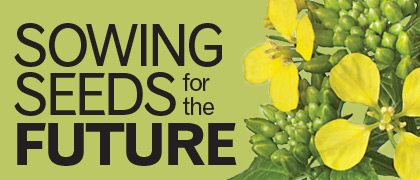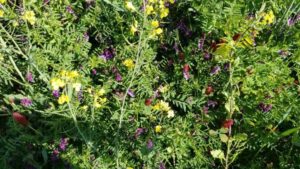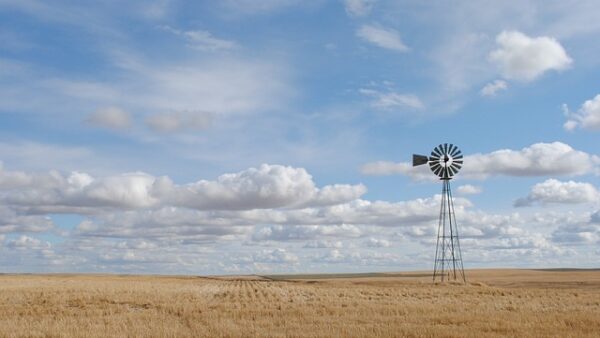Cover crops have proven to help farmers but can they help your business, too?
The needs of modern agriculture have driven the seed industry to focus on higher-yielding varieties for various cash crops, such as corn and soybeans. Now, farmers are beginning to place that same attention to detail on cover crops, which are planted post harvest to improve the soil quality of growers’ fields in the years to come.
“The whole movement is expanding rapidly, and most of it stems from farmers,” says Ron Althoff, agronomist and Midwest sales representative for Saddle Butte Ag, based in Tangent, Oregon. “There are a few seed sales reps and companies promoting it, but this is mostly farmer driven, which makes it exciting.”
Althoff says that while Indiana can be seen as the flagship of the cover crop community, the practice is also picking up steam in other U.S. states. “There are a lot of new areas coming on board,” he says, noting that soil improvements, yield increases and weed control are the primary reasons farmers are jumping on board. Other benefits include increased earthworm populations and more nitrogen in the soil.
“To be conservative, I’d say we’re seeing an increase of 25 percent in the number of acres planted each year,” Althoff says.
Research has been a key factor in the growth trend, which has resulted in more farmers asking for better cover crop seed varieties. “There’s a great deal of research out there that can quantify the benefits of using cover crops, and that has led to increased adoption,” says Matt Ruark, a University of Wisconsin−Madison assistant professor of soil science.
Researching Mixes and Cocktails
One primary area of research involves determining what mix of cover crop species work best together. Cereal grains, grasses, legumes and brassicas are all popular options, depending on what end result farmers are looking to achieve.
Blends of around two or four species are usually referred to as a mixture. Blends that include 10 or more varieties are often dubbed “cocktails,” according to Ruark.
“Every seed company talks about improving profitability for farms, but if those hybrids go into unhealthy soil, you’re going to be limited.”— Dave Robison |
“There are a lot of unknowns in cover crop mixes,” Ruark says. “It’s hard to quantify because we don’t have a lot of research on those cocktails yet.” It might be three years before there is any significant data to share about a particular mix, he adds.
Dave Robison, forage and cover crop manager for the Wisconsin-headquartered Legacy Seeds, Inc., agrees that there is much to learn about these larger mixtures. “Using six or even 10 different species in a mixture isn’t a bad thing, but it can be a little more challenging for folks to manage,” Robison says. “I suggest starting off with something a little simpler and then if they want to be more adventurous with more species, they can.”
A lot goes into selecting the perfect mix for each farmer, and seed suppliers need to help guide farmers through that process.
“It’s different for different folks,” Robison says. “Someone who wants to graze cattle on a cover crop might want to use a different mix than someone else.”
For suppliers, adding cover crops to the company’s catalog doesn’t just translate to more items to sell; it can mean a longer selling season. “Adding more cover crop options truly extends the selling season than we would have had,” Althoff says.
More than that, farmers who buy cover crop seed tend to be more satisfied with the performance of their corn and soybeans. “Yes, you’ll sell more seed, but what it does for us is enhance the whole farm’s profitability by giving them the best yield on their corn and soybeans,” Robison says.
In fact, offering customers a research-backed selection of cover crops is one way to stand out from competitors. “Every seed company talks about improving profitability for farms, but if those hybrids go into unhealthy soil, you’re going to be limited,” Robison says. “The greatest limiting factor to higher corn and soybean yields is not the genetics of the variety, it’s the poor health of the soil.”
Knowing this, cover crops should be considered a companion to cash crops. “If we can improve the soil health, which will make the hybrids reach their highest potential, it will help customers be more profitable,” Robison says. “We need to match hybrids to the right soil, and that will make every part of a farm more profitable.”
At that point, seed companies have shifted from just offering a product to also offering a service. “You’re not just selling seed, you’re selling the potential to get the best out of that seed,” Robison says.
Seed salesmen might face hesitation when working with farmers who don’t own the land they’re farming. Tom Kaspar, a plant physiologist at the U.S. Department of Agriculture’s Agricultural Research Service National Laboratory for Agriculture and the Environment in Ames, Iowa, says it can be hard to reach that segment of operators.
“How do you convince people to apply cover crops to land they don’t own?” he asks. Working with and informing those non-operator landowners can help.
“A lot of landowners realize they don’t want erosion either,” Kaspar says. “They want protection and improvement for the soil for the future.”
First Steps to Ensure Success
In order to protect the market, Althoff urges seed companies to educate themselves before jumping in.
“The business is getting big enough now that we might start to see companies come into the market trying to make a quick sale, but if they end up selling farmers something that won’t work, it will cause a setback,” he explains.
The Midwest Cover Crop Council website is a good online resource for suppliers looking to understand more about what benefits each crop or mix offers, as well as when, where and how to plant it for the best results. The website even features a cover crop selector tool, which can be narrowed down to the county level in most Midwestern states.
“It’s important for seed companies to understand seeding rates, planting windows, planting methods and if a certain crop will survive the winter and how to terminate it in the spring,” adds the University of Wisconsin’s Ruark.
Even companies that already offer cover crops have a lot to learn. There’s a lot of new research being done each year and it’s important to continually revisit and reevaluate what cover crop varieties can best serve your customers in your specific region.
“We need to educate farmers because often times, they’ll see an article about a new species and want to try it, but co-ops and seed providers shouldn’t sell them something that is going to be difficult to make work in their area,” Kaspar says.
He expects the future to bring even more cover crop variations and varieties to the marketplace, so ongoing research will continue to be crucial. “We’re just barely scratching the surface as far as potential,” Kaspar says.
Melissa Shipman













